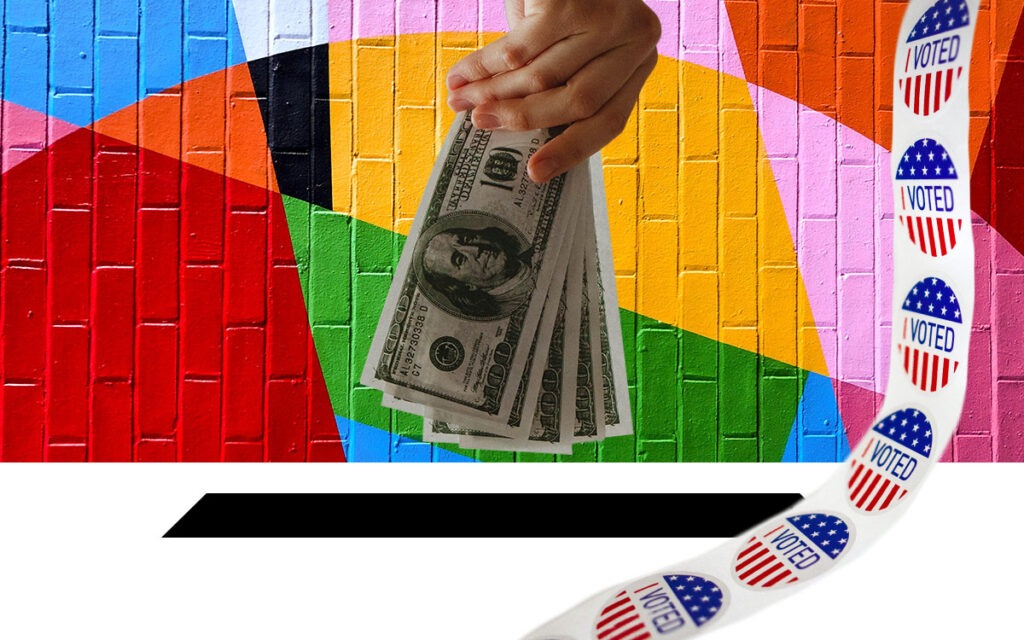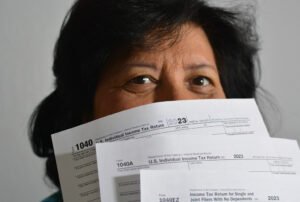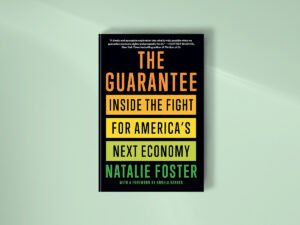

Earlier this month, the US House of Representatives gripped the nation as the new narrow Republican majority struggled on multiple ballots to elect a speaker to lead it. Of course, ultimately Kevin McCarthy prevailed on the 15th ballot.
What broke the logjam? Media accounts focused on rules concessions, and those were important. But part of the story took place far from the halls of Congress.
As the Center for Responsive Politics—the nonprofit that operates the Open Secrets database—details, two political action committees played a key role. One was the Congressional Leadership Fund, the so-called “independent” super PAC endorsed by Kevin McCarthy, which spent over $227 million on campaigns in the last election. The second PAC was the Club for Growth, a group that backed Republicans opposed to McCarthy and which had spent over $80 million during the 2022 election cycle.
The deal struck, in effect, was a nonaggression pact. In other words, the two PACs agreed not to contest primary elections—thereby setting the stage for the rules change agreements that followed. The deal speaks to the seemingly ever-growing power of money in politics—with behind-the-scenes machinations at least as important as the drama in the aisles that was broadcast by C-SPAN.
Mapping Billionaire Election Expenditures
When Americans for Tax Fairness published their report, Billionaire Money in the 2022 Elections: Buying Elections & Distorting Democracy, in November, they did not know that two super PACs would be openly jostling for power in Congress the following January. What authors William Rice, Zachary Taschman, and Frank Clemente document, however, is that billionaire contributions are rising—and rising fast.
As of September 30, 2022, 465 billionaires had spent $881 million on the 2022 midterm election campaign. Not considering the added dollars surely spent in October and November, that’s a 44 percent increase over 2018 levels and—even after adjusting for inflation—more than 20 times the $32 million (about $42.3 million in 2022 dollars) that billionaires spent in the 2010 midterm cycle. The US Supreme Court’s decision in Citizens United took place in 2010; clearly, those who predicted that the decision would encourage a rise in election expenditures by the wealthy were not wrong.
But who’s spending and on what? Here, Rice, Taschman, and Clemente are most enlightening. Among their high-level observations:
- Billionaires tend to make their campaign expenditures through PACs. Billionaires were responsible for 7.4 percent of all election expenditures, but a higher 10.4 percent of PAC money.
- In the post-Citizens United era, billionaire expenditures rise with each election cycle. From a 2010 baseline of $32 million, billionaire spending rose to $232 million in 2014, $611 million in 2018, and $881 million in 2022, with final figures that include the fourth quarter of 2022 still pending.
- Billionaires often direct their contributions to “super PACs.” As the authors explain, “Unlike regular PACs, super PACs can collect unlimited contributions from each donor, whether an individual or an organization” (1). The authors add that billionaires have provided 47 percent of the money raised by 20 of the largest billionaire-backed super PACs.
- Four of the most popular super PACs are the “four congressional super PACs of the House and Senate leadership of both political parties.”
- Billionaire money leans Republican, but only by a margin of three-to-two. Both Democrats and Republicans raise hundreds of millions from billionaire donors.
- Even among billionaires, giving is concentrated among a few. The authors indicate that of the $881 million that 465 billionaires spent, an estimated $643 million (73 percent) was spent by 20 of them. This means that these 20 billionaires spent an average of over $32 million each.
- These numbers, however, understate billionaire spending. Contributions to super PACs are unlimited, but they must be disclosed. However, people may contribute to 501c4 nonprofits anonymously. The authors note, for example, that nearly $120 million in 2022 was donated to 501c4 organizations that were “established specifically to fund the four congressional super PACs” (13). Billionaires likely contributed much of this money, the authors contend.
Breaking Down the Big Spenders
Rice, Taschman, and Clemente also break down who the 20 top billionaire spenders are. Six of them support Democrats, while 14 support Republicans. That said, George Soros, who tops the list, supports Democrats and spent $128 million in the 2022 election cycle—nearly twice what Richard and Elizabeth Uihlein, the top Republican donor family, spent. The list will change in the next election cycle given that number-two Democratic Party supporter Sam Bankman-Fried, who spent $39.7 million in the 2022 election cycle, is under federal indictment for fraud.
These 20 billionaires are listed below in order of how much they spent. Charles and Helen Schwab, at the bottom of the list, “only” spent $10.7 million.
Name Leading Source of Wealth Party (D or R)
George Soros Hedge fund management D
Richard & Elizabeth Uihlein Uline (business supplies) R
Ken Griffin Hedge fund management R
Jeffrey Yass Stock trading R
Sam Bankman-Fried Cryptocurrency trading D
Stephen Schwarzman Blackstone (private equity) R
Larry Ellison Oracle (computer software) R
Peter Thiel PayPal (computer software) R
Sign up for our free newsletters
Subscribe to NPQ's newsletters to have our top stories delivered directly to your inbox.
By signing up, you agree to our privacy policy and terms of use, and to receive messages from NPQ and our partners.
Patrick & Shirley Ryan Insurance R
Diane Hendricks Construction materials R
Michael & Susan Bloomberg Financial market data D
Stephen Mandel Hedge fund management D
Paul Singer Hedge fund management R
Koch family Energy (especially oil) R
Miriam Adelson Casinos and convention centers R
Steven and Andrea Wynn Casinos and real estate R
Bernard and Bill Marcus Home Depot R
Jim and Maryland Simons Hedge fund management D
Reid Hoffman and Michelle Yee PayPal, LinkedIn, venture capital D
Charles and Helen Schwab Investment advising firm R
The industries of the big spenders are revealing—over half of the people listed above made their fortune through some form of investing. If you want to understand why investment income continues to be taxed at a lower rate than regular wage income—a fact that made billionaire investor Warren Buffett famously remark that he pays a lower tax rate than his secretary—a quick perusal of the above list is informative.
Somewhat naively, Rice, Taschman, and Clemente write that “by backing Democrats, Soros will likely see a poor return on his investment if his primary motivation is his own short-term economic self-interest” (8). In fact, Democrats’ dependency on large billionaire contributions has had an obvious restraining effect, which might be said to be in the economic interests of their billionaire contributors.
For example, a full repeal of the 2017 Republican tax bill, which reduced the corporate income tax rate from 35 to 21 percent, was not even attempted in the last Congress. And many proposed tax increases were whittled away. First to go in 2021 were efforts to raise estate taxes and restore corporate tax rates to 28 percent. Later, the estimated $200 billion in annual tax revenues of Build Back Better became $79 billion in the Inflation Reduction Act, as measures to raise income tax rates on the wealthy were stripped from the bill. Just before the Inflation Reduction Act was passed, Senator Kyrsten Sinema (I-AZ) demanded in exchange for her vote that a measure to end the “carried interest loophole” provision be stripped from the bill, thereby ensuring that managers of private equity firms and hedge funds continue to pay taxes on their income at much lower capital gains rates.
Is Campaign Finance Repair Possible?
At the end of their report, Rice, Taschman, and Clemente propose four reforms to reduce billionaire influence. These are:
- Raise taxes on billionaires
- Restrain single-candidate PACs (by bringing them under the same donations limits as apply to candidate campaigns)
- Require public disclosure of 501c4 donors
- Reduce the size of the Federal Election Committee (from six to five people to avoid tie votes and perhaps enable some decisions to be made)
These reforms are nothing if not modest. Moreover, as is often the case with such reports, the question of how to organize and win against billionaire oligarchs is not considered. This is not a trivial concern. Take billionaire taxes. Rice, Taschman, and Clemente highlight a proposal floated by President Joe Biden last year that would have created an annual 20 percent minimum income tax (including income from unrealized capital gains) on households with wealth of over $100 million. The measure would have raised an estimated $36 billion a year in revenue. But that proposal did not make it into the Inflation Reduction Act for the reasons noted above.
Similar resistance from wealthy donors is also evident at the state level. In 2020, the state of Illinois had a proposal on the ballot to raise state income tax rates on high earners from five to eight percent; Griffin, the third highest 2022 election spender named above, spent $54 million on the campaign to defeat the measure. ProPublica estimates that Griffin would have paid an additional $51 million in tax each year if the measure had passed. On a more positive note, a similar measure in Massachusetts passed last November, in part because two teachers’ unions spent over $18 million in favor of the measure and were able to outspend tax opponents.
The bottom line: it is important to name billionaire power as a central problem and organize to address it. Yes, union money was important in getting the “millionaire tax,” or “fair share amendment,” to pass in Massachusetts. But it wasn’t just the money; the initiative, as Max Page, president of the Massachusetts Teachers Union, points out in Labor Notes, was the culmination of an 11-year effort and a seven-year formal campaign. Success came only after multiple failed efforts. Among the principles that Page identifies as being critical to prevailing are:
- Be consistent and persistent
- Invest in organizing
- Speak out “about the concentration of wealth and the inequities of our tax system”
Page adds that “perhaps [the] most profound win…was that we stuck a knife in the austerity narrative, which says public resources are always scarce and that we must pull back on our ‘unrealistic’ political vision.” If advocates in Washington adopt a similar approach, restraining billionaire influence might become achievable.













